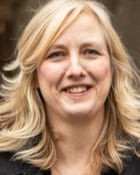Who made the desert bloom?

JVL Introduction
Who made the desert bloom? We all know it was the early Zionist colonisers – except that it wasn’t…
All nationalisms are constructed on myths about national origins and great deeds, none more so than Zionism.
They have all been comprehensively deconstructed but for the true believers their mythical power remains undimmed. So they are worth exposing again from time to time.
Diana Mason was in good form when she took apart this central myths of Zionism.
This article was originally published by Lawrence of Cyberia on Fri 19 Mar 2010. Read the original here.
Tell Me Again, Who Made The Desert Bloom?
In December 1945 and January 1946, the British Mandate authorities carried out an extensive survey of Palestine, in support of the work of the United Nations Special Committee on Palestine. The results were published in the Survey of Palestine, which has been scanned and made available online by Palestine Remembered; all 1300 pages can be read here.
One of the subjects investigated in the Survey of Palestine is land use; specifically, which crops were Palestine’s leading agricultural products at the end of the British Mandate, and whose farms were producing them.
So, according to the Survey of Palestine, who really made the barley fields of Beersheba bloom?

The British government survey found that in 1944-45 Palestine’s farmers produced approximately 210,000 tons of grain.
About 193,400 tons of that grain were cultivated on Palestinian farms; about 16,600 tons were cultivated on Jewish farms.
See the precise numbers, from a scan of the relevant page of the Survey of Palestine, here.
Who made the melon patches of Jaffa bloom?

The British government survey found that in 1944-45 Palestine’s farmers produced approximately 143,000 tons of melons.
About 136,000 tons of those melons were cultivated on Palestinian farms; a little over 7,000 tons were cultivated on Jewish farms.
See the precise numbers, from a scan of the relevant page of the Survey of Palestine, here.
Who made the tobacco fields of Safad bloom?

The British government survey found that in 1944-45 Palestine’s farmers produced approximately 1,683 tons of tobacco, on 28,169 dunams of land. Virtually all the land under tobacco cultivation was Palestinian.
Who made the vineyards of Hebron bloom?

The British government survey found that in 1944-45 Palestine’s farmers produced approximately 40-50,000 tons of grapes, and between 3-4 million litres of wine. About 86% of the land that produced these products was owned and cultivated by Palestinians.
See a scan of the relevant page of the Survey of Palestine here.
Who made the olive groves of Tulkarm bloom?

The British government survey found that in 1944-45 Palestine’s farmers produced approximately 79,000 tons of olives.
About 78,000 tons of those olives were cultivated on Palestinian farms; a little over 1,000 tons were cultivated on Jewish farms.
See the precise numbers, from a scan of the relevant page of the Survey of Palestine, here and here.
Who made the banana groves of Tiberias bloom?

The British government survey found that in 1944-45 Palestine’s farmers produced approximately 8,000 tons of bananas.
About 60% of the land that produced these bananas was owned and cultivated by Palestinians.
See the relevant page of the Survey of Palestine, here.
Who made the vegetable fields of the coastal plain bloom?

The British government survey found that in 1944-45 Palestine’s farmers produced approximately 245,000 tons of vegetables.
About 189,000 tons of those vegetables were cultivated by Palestinian farmers; about 56,000 tons were cultivated by Jewish farmers.
See the precise numbers, from a scan of the relevant page of the Survey of Palestine, here.
So, on the eve of the partition resolution, in which the United Nations proposed to allocate 55 percent of the land to Jewish Palestine (including those parts that produced most of Palestine’s leading crops, with the sole exception of the olive crop), and 45% to Arab Palestine, Palestinian Arabs were producing:
Palestine’s agricultural produce at that time had an annual value of approximately 21.8 million pounds sterling; 17.1 million of which was produced by Arab cultivation, and 4.7 million by Jewish cultivation. (See the exact numbers here).
So, who made the desert bloom? The Palestinians made the desert bloom.
Photos: All the photographs of Palestinian farmers cultivating their crops in Palestine under the British Mandate are from Before Their Diaspora: A Photographic History Of The Palestinians 1876 – 1948, by Walid Khalidi.
---------------------------------------------------------------------
My Comment :
My sincere compliments for your effort to fight one of the central myths regarding the justification by Jewish Zionists for colonizing Palestine. At the same time however I do greatly regret, that you did abstract hereby from the historic fact, that Palestine had been the subject of a different form of colonisation, before the Jewish Zionists inundated the region with their fanatic followers. After all, it had been the sect of the German Templers, that from 1868 onwards did found a considerable number of settlements in Palestine.
These Templers did have a profound and lasting influence on many aspects of then Palestine. By transforming many swamps into fertile territory and by introducing modern agricultural methods, their contribution to stimulating the productivity of the land, can be hard to overestimate. By furthermore upgrading the quality of the road-infrastructure and drastically improving harbour facilities – which both did stimulate commerce and tourism – and by implementing the fruits of the European industrial revolution, their imprint on the Palestinian society of that time (both on the indigenous Arab-Palestinians as on the indigenous Yishuv) had been rather overwhelming.
The motivation for the German religious sectarians behind spending so much time and effort in transforming then Palestine, partly can be explained by their messianic conviction of so-called millennialism. The latter did mean in fact, that the “Promised” Holy Land had to be prepared for the arrival of “the Chosen People”, in order to facilitate (and accelerate) the “second coming of Jesus”. What they did not mention on this subject at the time, is that the Jewish believers had first to be converted to Christianity before redemption could be delivered.
The Christian-Zionist German sect did however disappear rather abruptly from the Palestinian scenery, when it became increasingly susceptible for the murderous nazi concept during the thirties.
From the mid-seventies of the 20th century another group of Christian Zionists did arrive at that region, with rather similar religious convictions and intentions as their predecessors, which until this very day, have been gratefully exploited by many Jewish Zionist regime.
https://tempelgesellschaft.de/media/geschichte/footprints_of_the_templers.pdf
https://www.bbc.com/news/magazine-22276494
https://lib.haifa.ac.il/systems/etexts/1102075.pdf







